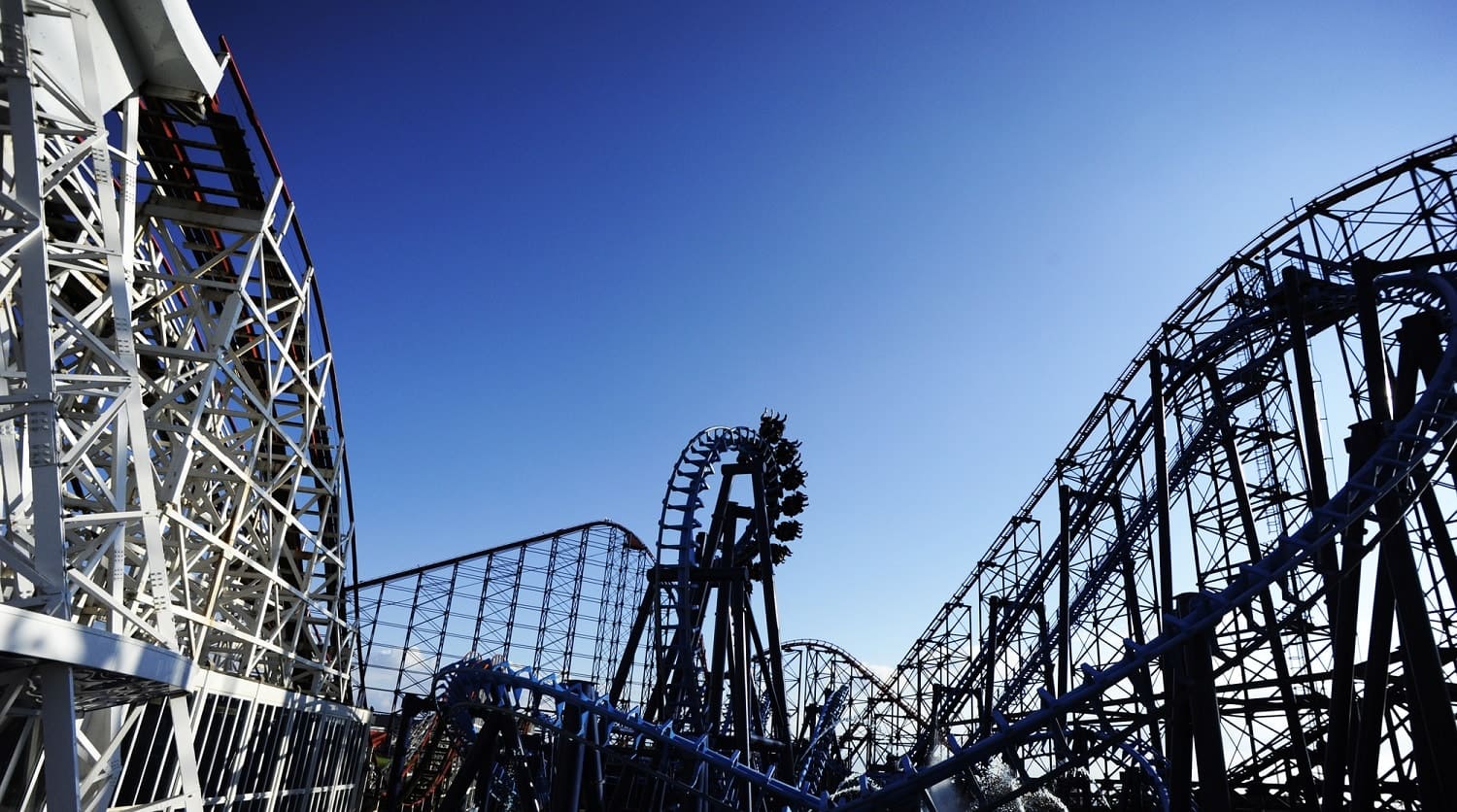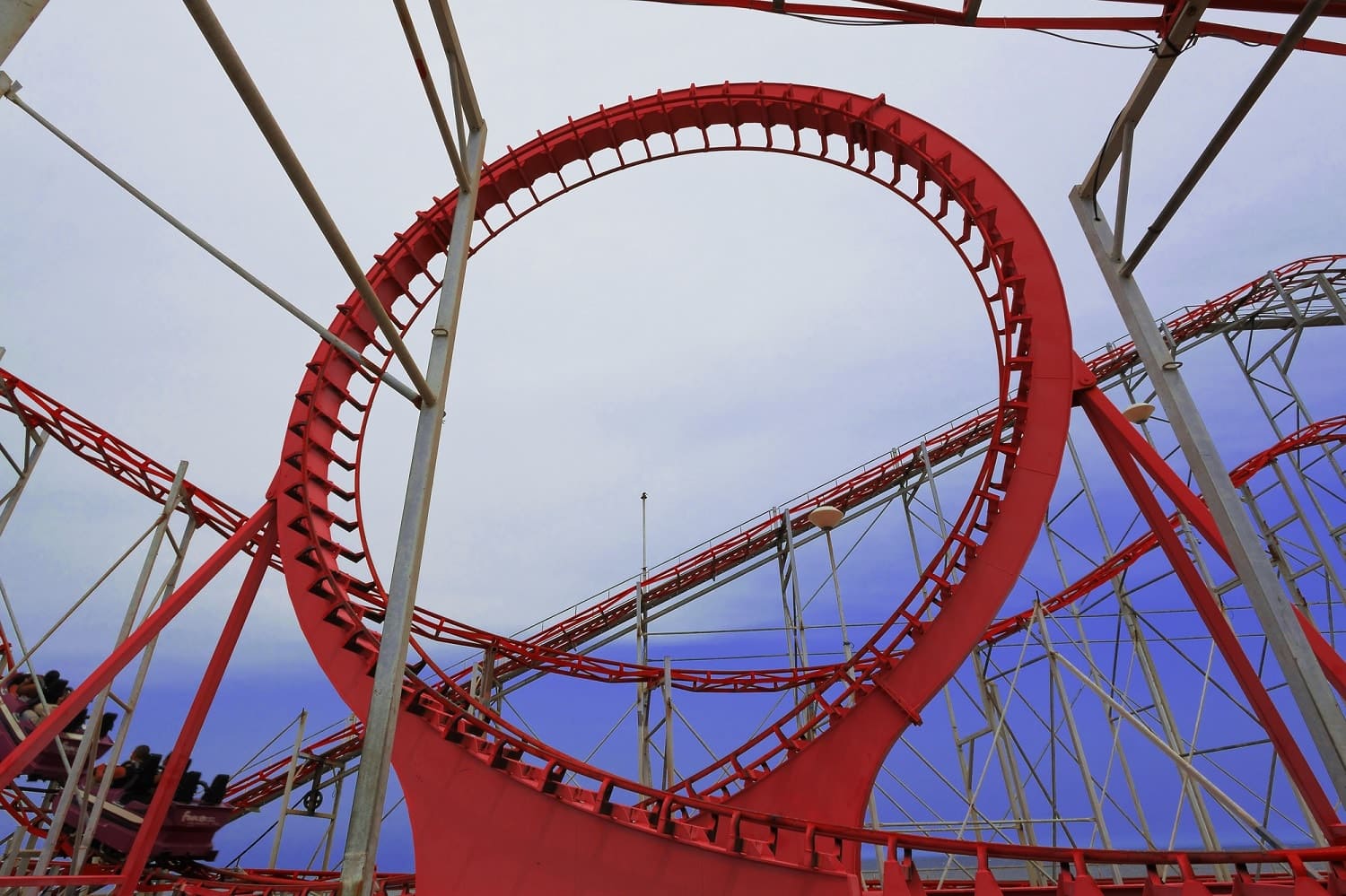The history of the roller coaster
It’s hard to believe that roller coasters, or as they are also called, “Russian mountains” or “screaming machines,” trace their history to about 300 years ago in Russia.
Initially, the slides were artificial ice hills in winter. Their slope’s angle was approximately 50 degrees. Next to the hills, towers were erected where thrill-seekers climbed with their sleighs, and then descended the ice hills. The towers reached 20m high; the length of an ice slope was about 180m.
Having taken such amusement rides in St. Petersburg, Catherine the Great became their ardent admirer and even ordered a summer version of the slides to be built for her in the royal residence. Instead of their ice version, a wooden slope was installed, and instead of a sleigh, carts on wheels were used, which moved along special grooves.
Tourist entrepreneurs from France who visited Russia in the 19th century were so excited by the idea of these attractions that upon returning home they created their own version of a roller coaster (Les Montagnes Russes) with carts that moved along a trackway. Over time, the slides changed and improved, gaining more and more fans.
While in Europe such slides served as entertainment, in the United States their use was more pragmatic. At the end of the 18th century, in the Pennsylvania town of Summit Hill, coal was discovered. To extract it from the mines to the surface, similar designs began to be used. In 1830s, a “gravity” railroad appeared, along which coal from the top of the hill reached the warehouses in just half an hour. However, in order to bring coal up the hill, they still used mules that went uphill for four hours.
Soon, the railroad became the site of Sunday visits by the people of the upper class who were ready to pay US$0.50 to ride with the wind in their hair and get a nauseous thrill. Over time, the entertainment also struck a chord with tourists. As a result, this road was used for coal transportation only in the morning, while the thrill-seekers used it for the rest of the time. By the middle of the 19th century, a ratchet gearing that allowed the mine cars to be lifted to the top of the hill was developed. Now the mules could rest.

Roller coaster construction
The roller coaster became a commercial attraction at the end of the 19th century, thanks to LaMarcus Adna Thompson, an inventor and a businessman from Ohio. The first U.S. Switchback roller coaster appeared in the Brooklyn, New York, neighbourhood of Coney Island in 1881. In 1927, it was replaced by the Cyclone slides, the construction of which cost US$175,000. A ticket for the ride cost US$0.25 cents, and 1,400 people per hour could ride the coaster.
However, the roller coaster, as we know, is not only ups but also downs. During the time of the Great Depression, many rides across America met their sad demise. Bulldozers demolished some of them, while others rusted and collapsed from decades of neglect. The gradual economic recovery and the willingness of the population to spend money on entertainment saved the situation. In 1959, the first Disneyland commissioned the Matterhorn roller coaster. This roller coaster was the first one made of tubular steel and with a nylon coating for coaster wheels. These innovations have forever changed the amusement-ride industry. In the 1970s, Ron Toomer became a leading builder of tubular steel roller coasters. He devoted 30 years of his life to the construction of “screaming machines” and set more and more records, creating the fastest, highest and “craziest” roller coasters.
However even now the amusement-ride industry is on the go; the latest technology makes the roller coasters more exciting, but no less reliable. The future lies with electromagnetic technologies, which will make the coasters move along the track on magnetic cushions without noise and shaking.

Roller coaster arrangement
“Screaming machines” are classified according to the material they are made of. There are two large groups of roller coasters – those made of wood and those made of steel. Massive wooden structures in the form of flyovers are made of fir or pine trees and treated with a special protective coating that extends the product life of the wood. Places of increased load and joints are reinforced. Increasingly, more reliable and durable steel roller coasters replace wooden ones.
How do roller coasters work?
The whole structure is quite simple. Coaster tracks are held up with thick steel tubular supports.. Steel racks are attached to a rectangular-box-shaped beam in the form of welded round steel pipes on which the track itself and the coasters are mounted. As soon as the main construction of the slides is assembled, wiring is done, the slides are painted, the territory is landscaped and the access platform is set up.
All materials used in the construction of the slides should comply with strength and safety standards. For coaster bodies, stampings made of aluminium or fiberglass are used. Wear-resistant polyurethane is indispensable as the basis of the wheels, because it does not create a lot of noise when riding.
The finished attraction is commissioned in a test mode. At a roller coaster test-run stage, sandbags ride instead of passengers. I’d like to think they also enjoy it. Only after repeated successful test runs does the roller coaster come to life because of the cries and enthusiasm of true extreme-thrill lovers.
Interesting facts about roller coasters:
The tallest roller coaster in the world is called Kingda Ka.
It is located in Jackson, New Jersey, in the United States, at the Six Flags Great Adventure theme park. Thrill-seekers can ride quickly (the coaster speeds up to 205km/hour in 3.5 seconds) down a slide 140m high at an angle of 90 degrees. These slides are definitely not for the faint-hearted.
The fastest roller-coaster in the world is called Formula Rossa.
It is located in Abu Dhabi at the Ferrari World theme park. Here you can accelerate to 240km/hour in 4.9 seconds. The maximum height of the ride is 52m. Such overloads are quite comparable to those experienced by Formula 1 racers.
The longest roller-coaster in the world is called Steel Dragon 2000.
It is located in Nagashima Spa Land amusement park in Japan. Here you can enjoy a four-minute ride, and travel a distance of 2.4km. You’ll definitely have time to take a selfie, provided that you don’t feel sick.
Vintage wooden roller-coaster Leap-the-Dips.
This roller-coaster in Altoona, Pennsylvania, USA, is one of the oldest-operating roller coasters in the world. It was built in 1902. The very thought rattles the nerves when you ride on it. Some 118 years later, you can ride at a speed of 16km per hour on this shaky wooden roller coaster with no seat belts or head restraints. Before such a trip, it would not hurt thrill-seekers to insure their lives.
Although, of course, everything is designed for a safe trip there. These slides use lateral friction to keep the coasters on track. Modern roller coasters are becoming higher, steeper, and more dynamic. In search of thrills, we are ready to pay money and scream with pleasure and fear. This means that from a technical point of view, the roller coasters will further improve, offering us more and more intense emotions.
